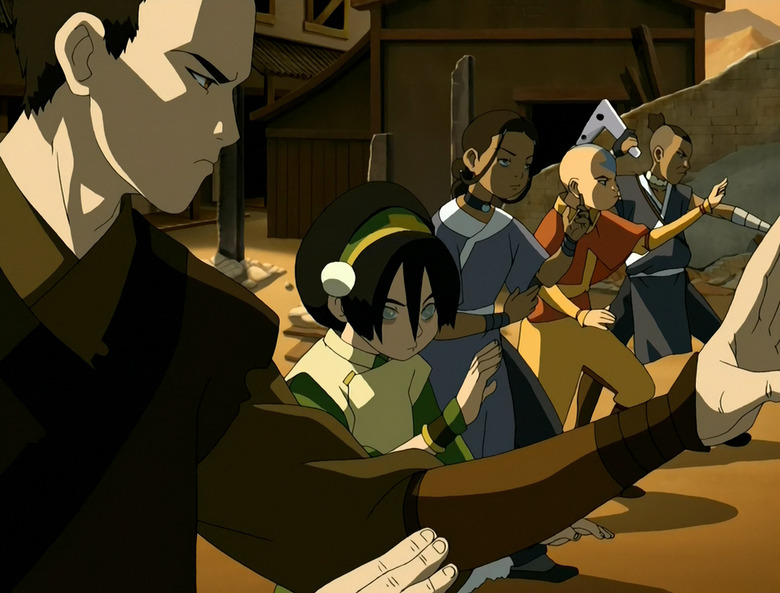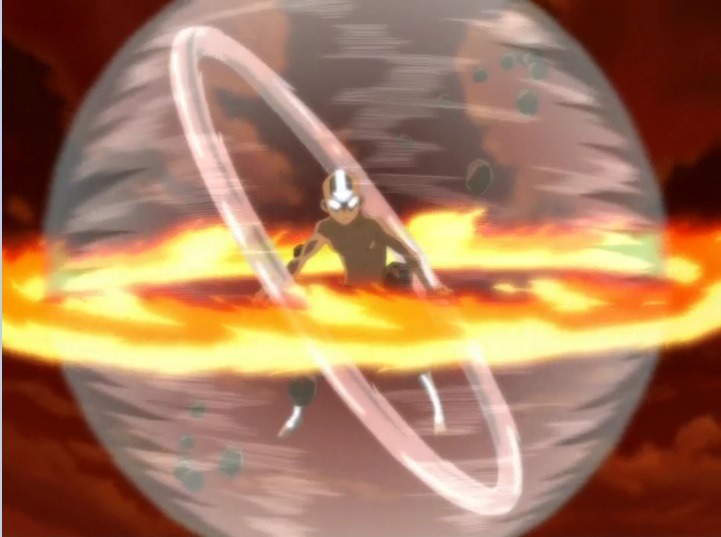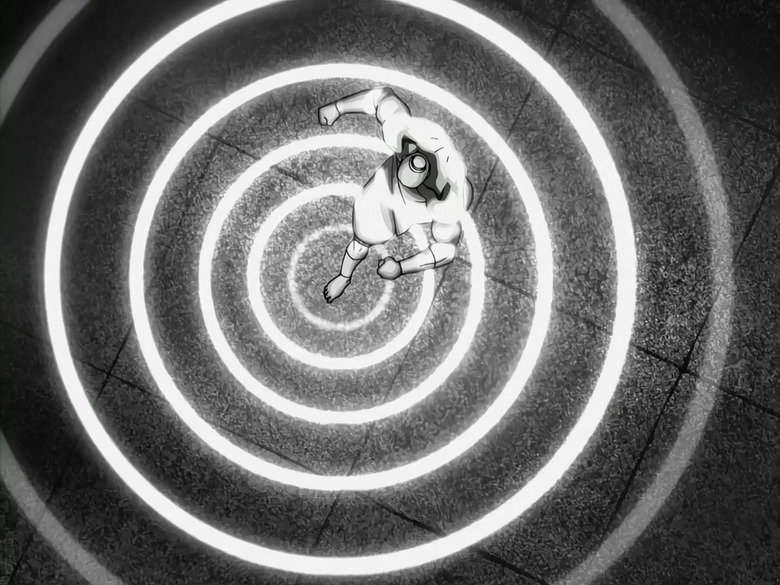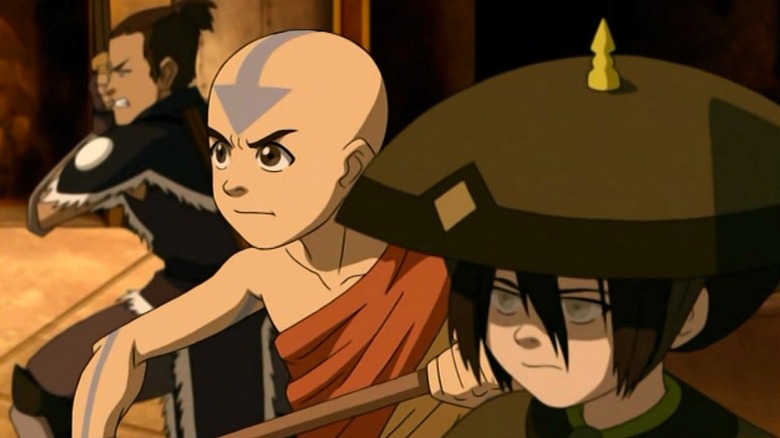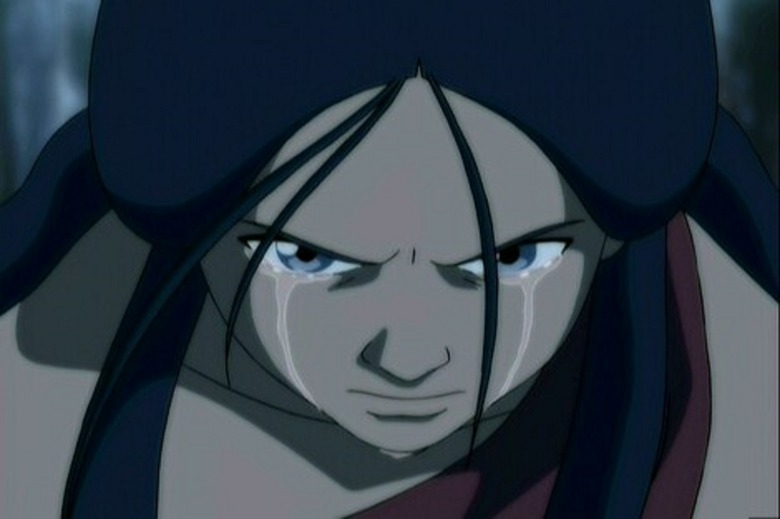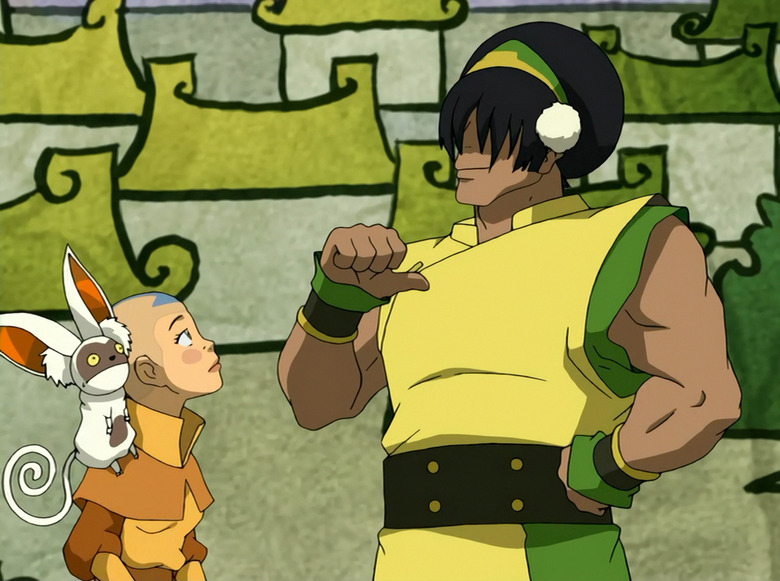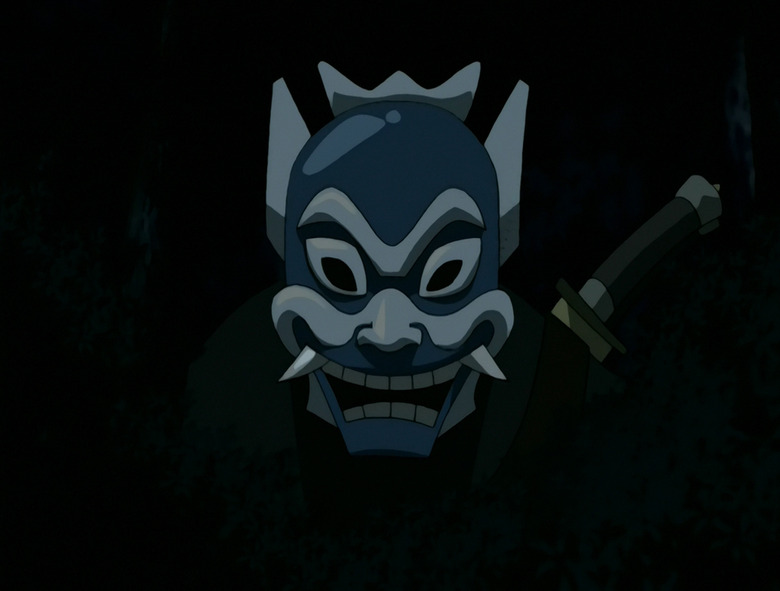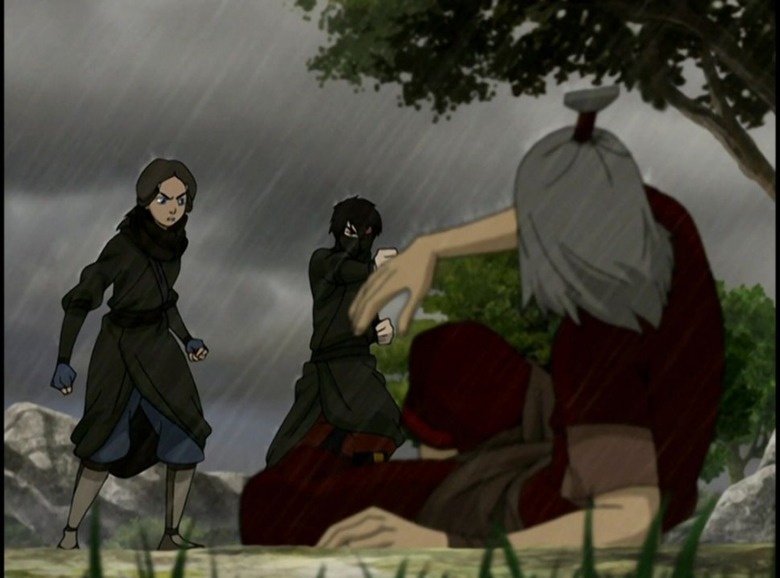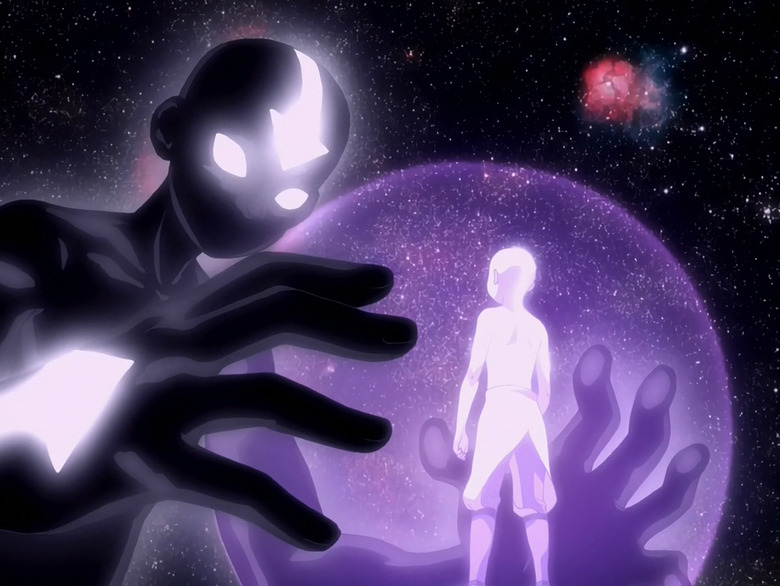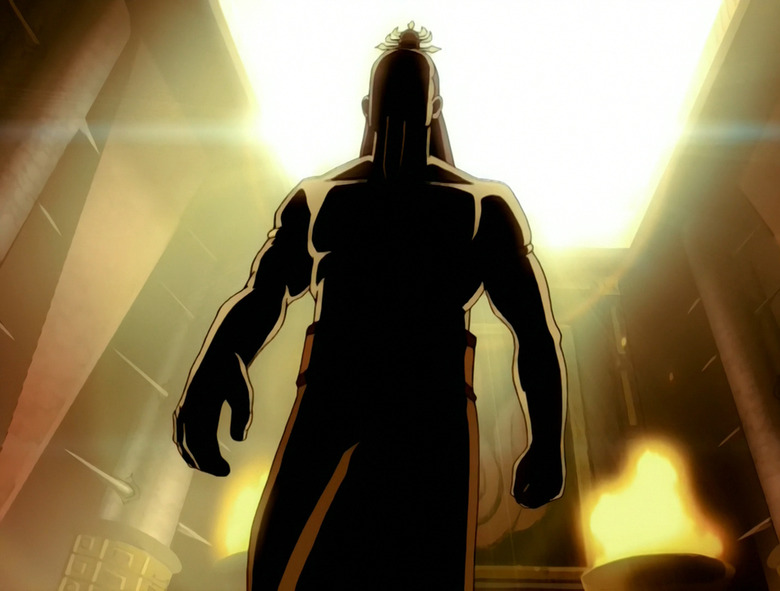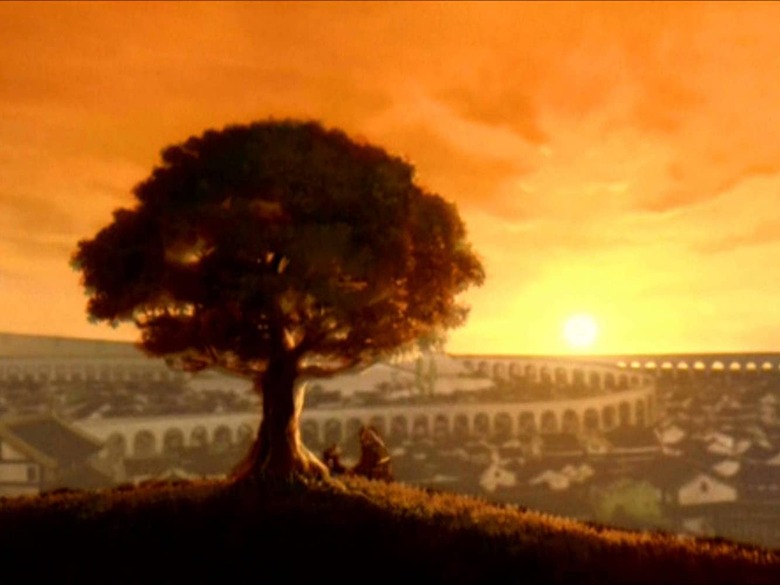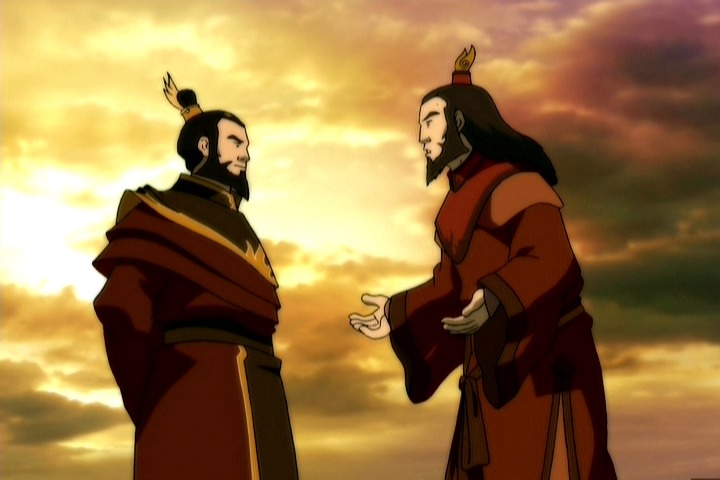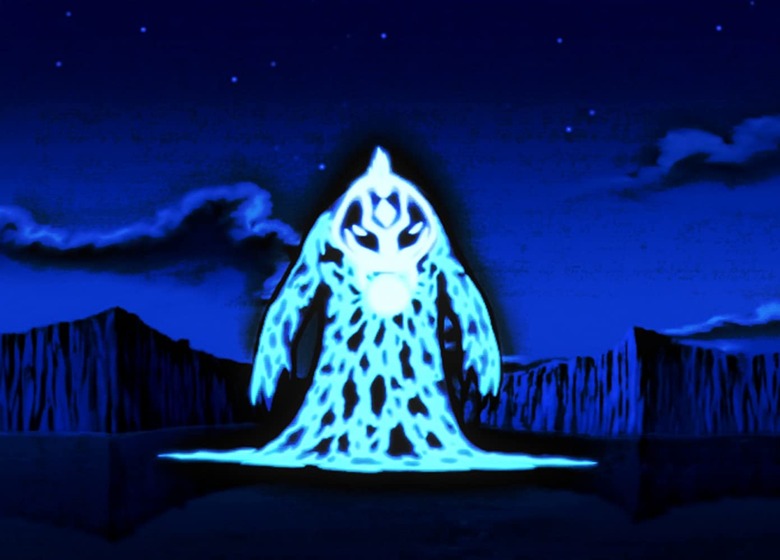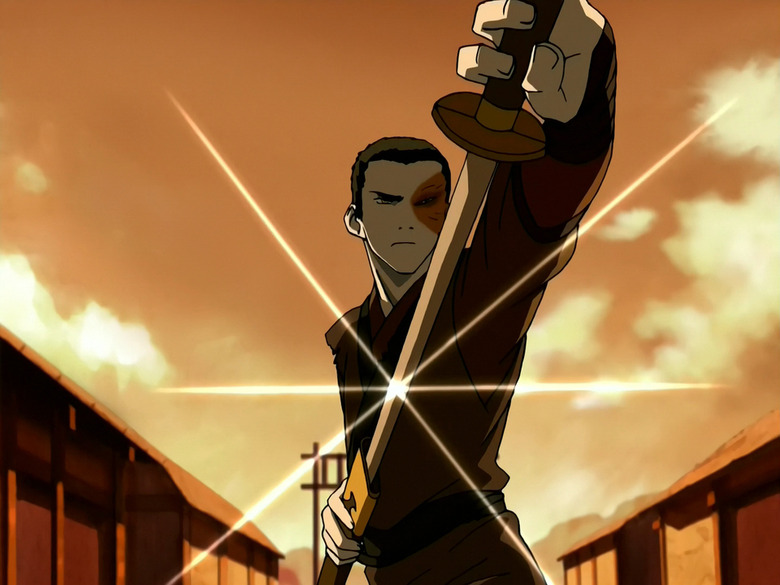The 15 Best 'Avatar The Last Airbender' Episodes, Ranked
Long ago, the four nations lived together in harmony. Then, everything changed when Avatar: The Last Airbender went off the air. The superb Nickelodeon animated series left a massive hole in many fans' lives, and even more so when it became increasingly harder to stream the series. But finally, after so many long years, Avatar: The Last Airbender is back on U.S. Netflix.
It's fitting that the epic anime-inspired fantasy series would hit Netflix on the 15th anniversary of Avatar: The Last Airbender. So to celebrate the arrival of Avatar: The Last Airbender on this, the 15th of May, on the 15th anniversary of the show's premiere, here are the 15 best episodes of Avatar: The Last Airbender.
Spoilers ahead for Avatar: The Last Airbender.
15. The Chase
Heroic tales are only as good as their villains, and the greatest villain of Avatar: The Last Airbender gets a hell of an introduction in "The Chase." I'm speaking of course, of Azula, the Fire Nation princess and resident sociopath whose ruthless maneuverings and chilling charisma help her surpass even the show's ultimate Big Bad, Fire Lord Ozai. Though technically introduced to the Gaang in "Return to Omashu," "The Chase" is where Azula and her team become a force to be reckoned with. "The Chase" follows the Gaang after recently welcoming their newest member, Toph, to the group. Right off the bat, "The Chase" establishes the rifts among our new core characters (always essential in a tightknit ensemble), and drives a wedge into them with its premise: the group is being inexplicably chased by a relentless machine that won't allow them a good night's sleep. Tensions fly, unlikely friendships are formed with former enemies, and the episode ends with a thrilling stand-off between the Gaang and Azula, with Iroh and Zuko by their side. Though it offered no tidy ending, the episode would foreshadow later alliances and establish Azula as one of the most compelling female villains on TV.
14. Sozin's Comet Part 4: Avatar Aang
How does a pacifist protagonist win the war against an evil Empire? It's a surprisingly deep ethical dilemma that Aang wrestles with throughout Book 3, and which comes to a head in the majestic, awesome series finale, "Sozin's Comet Part 4." The final battle between Aang and Fire Lord Ozai is the stuff of blockbuster-level dreams, spanning nearly the entire half-hour as the two foes breathe fire and level mountains. It's one of the best-animated fight sequences of the entire series that ends with the surreal, otherworldly image of Aang and Ozai becoming overtaken by pure beams of energy. Combined with Jeremy Zuckerman's beautifully somber score, performed for the finale by a live orchestra, that battle alone is enough to bring tears to your eyes. The rest of the episode holds up as well, as the episode reaches a crescendo with Iroh's triumphant liberation of Ba Sing Se, Katara's knockout fight with Azula, and a heart-pounding moment of terror for Toph and Sokka. Though the epilogue rather quickly ties up loose ends (and gives us a few romantic pairings we're not quite satisfied with), "Sozin's Comet Part 4: Avatar Aang," is a rip-roaring culmination of the entire series.
13. The Blind Bandit
"The Blind Bandit" gives us the final piece of the puzzle we never knew was missing: Toph Beifong, the tough-as-nails blind 12-year-old girl who is recruited by Team Avatar to be Aang's Earthbending Master. The Gaang happens upon the blind fighter during an earthbending tournament, where Toph easily bests the other muscly fighters with her effortless earthbending skills. Recognizing the master that he saw in his visions, Aang tries to recruit Toph, but is rebuffed by the girl, who leads a double life as a sheltered daughter of a wealthy family and a prized earthbender. While "The Blind Bandit" is mostly a fun comedic episode that plays like a glorified wrestling match (a concept that the writers loved so much they made it a central part of The Legend of Korra), it's a pivotal turning point for the series that feels like it finally comes into its own with the introduction of Toph. Angry, blunt, and rude, Toph blasts into the series like a tsunami — or more accurately, a landslide — that shakes up the somewhat harmonious ensemble and finally completes the five-man band of Team Avatar.
12. The Day of Black Sun Part 2
Avatar: The Last Airbender is a saga of failures, and "The Day of Black Sun" is arguably the most gutting one. The second part of the two-parter unfolds with baited breath, as Team Avatar and the Southern Water Tribe army discover that Fire Lord Ozai is nowhere to be found and that the Fire Nation had been prepared for their surprise invasion. Despite Aang, Sokka, and Toph's best efforts, they can't find the Fire Lord, and the army is forced to surrender and be taken as prisoners of war. It's a roller coaster of a half-hour that showcases Toph's brawny earthbending skills and gives us the villainous Azula at her most delightfully cunning — smoothly manipulating the team and evading them without a hair out of place. But despite the upsetting failures of Sokka's well-planned strategy — the guilt of which would eat at him for episodes to come — "The Day of Black Sun Part 2" gives us Zuko's shining moment when he confronts his father for a lifetime of emotional abuse and declares that he will join the Avatar. It's punctuated by the awesome moment when Zuko successfully redirects the lightning that his father shoots at him, cementing his transformation from tortured victim to strong-willed hero.
11. The Puppetmaster
One of the darkest and most disturbing episodes of Avatar: The Last Airbender, "The Puppetmaster" is the closest the show gets to being full horror. Team Avatar stops by a small town in the Fire Nation, where they hear tales of people disappearing in the nearby woods during full moon. They soon begin to suspect Hama, the elderly innkeeper they befriend who reveals herself to be a waterbender who escaped a Fire Nation prison and is living in hiding. While Katara is thrilled to learn from the resourceful Hama, who teaches her how to bend water from the most unlikely places, Sokka discovers the terrible truth: that Hama was the one behind the disappearances, kidnapping the unsuspecting villagers through a horrifying new technique called bloodbending. The show's depiction of bloodbending victims — all twisted limbs and crackling bones — is some of the creepiest imagery that Avatar: The Last Airbender has created. There are shades of possession movies mixed with dark fairy tales in "The Puppetmaster," but its most harrowing revelation is the monsters that war makes out of even its most noble, well-intentioned soldiers.
10. The Ember Island Players
"The Ember Island Players" is a welcome comedic breather amid a run of intense, plot-heavy episodes. A classic "filler" episode that has become a widely loved classic among fans, "The Ember Island Players" plays on the traditional structure of the recap episode, with a meta twist. Taking place right before the four-part series finale, "The Ember Island Players" follows the gang, now including Zuko, as they hear about a play written about them performed by an infamously bad acting troupe. Chock full of hilarious one-liners and winking nods at recurring tropes — from a constantly crying Katara, to a huge buff guy filling in for Toph, to Zuko's increasingly absurd hairstyles, to jokes about "honor" — "The Ember Island Players" is an episode "for the fans" that still manages to bring home the group's rising anxieties about the upcoming decisive battle against the Fire Nation.
9. The Blue Spirit
The turning point for Zuko from antagonist to complicated ally, "The Blue Spirit" is an intriguing mystery story that dares to withhold all the facts from its audience — a rarity in the more kid-friendly first season. When Aang is captured by Commander Zhao while his friends are incapacitated from a cold, it looks like the end of the road for the young Avatar. But unexpectedly, Aang is rescued by a mysterious masked figure referred to only as the Blue Spirit, a fleet-footed warrior wielding two swords who wordlessly breaks Aang out of jail. The episode is full of fun action sequences and very cool character designs, but what sets it above the rest is the eleventh-hour revelation that the Blue Spirit is none other than Prince Zuko, Aang's sworn enemy. But luckily for Aang, Zuko is bigger enemies with Zhao, who had in recent episodes usurped the prince's mission to find the Avatar. The episode offers no easy answers about Zuko's actions, which are demonstrably in his own self interests — or are they? The effortless alliance that the two strike up and Aang's own sad musings that in other life "we would have been friends," shakes up our understanding of this black-and-white world and hints at greater things to come for Zuko and his possible redemption.
8. The Southern Raiders
The episode best known for Katara's brush with the dark side, "The Southern Raiders" was another season 3 episode that showed just how dark this show could go. "The Southern Raiders" kicks off after Zuko, trying to settle into the gang, attempts to make amends with Katara, the last one in the group who still doesn't trust him. The two go on a mission to find the man who killed Katara's mother, a former Fire Nation commanding officer who Zuko has managed to locate — despite Aang's pleas that vengeance is not the answer. "The Southern Raiders" plays out like the best revenge stories: full of heartbreak, sacrifice, anger, forgiveness, and some truly cool action sequences. It's a landmark episode for Katara, hitherto a mother figure to the group, who is all bloodthirsty rage and hate to the point that it even shocks Zuko. But one of the most affecting revelations of "The Southern Raiders" is Katara's realization that her mother's the killer is just a pitiful, pathetic old man who lives under the sway of his nagging mother. It's an astonishingly cynical depiction of the face of evil as just any old face, especially in a series that had raised up its Big Bad as the ultimate evil.
7. The Crossroads of Destiny
No show crafts a season finale quite like Avatar: The Last Airbender, and the season 2 finale, "The Crossroads of Destiny," is a banger. Featuring some of the best action sequences of the series (crystal armor! Fire-breathing!), it also shows the Gaang laid low in the most brutal way. The episode brings the parallel journeys of Aang and co., and Zuko and Iroh to a head in a climactic confrontation with Azula. Azula has just pulled off a coup to become the ruler of Ba Sing Se (in her most devious Cersei Lannister maneuver yet), and both Team Avatar and Iroh and Zuko are forced to go on defense as she claims the great Earth Kingdom city for the Fire Nation. But just as quickly as we see the exciting alliance form between Zuko and Team Avatar, does it rapidly break, as Zuko betrays our heroes and his uncle to side with Azula. It's a breathtaking final battle, not just for its action, but for Zuko's distressing heel-turn and for Azula's deadly attack on Aang, who is struck down by her lightning bolt while in the vulnerable Avatar state. The ending is one of the darkest of the show's season finales, as the group flees the scene of destruction and the king solemnly proclaims, "The Earth Kingdom has fallen."
6. The Storm
The episode that marks the turning point of Avatar: The Last Airbender from good children's show to one of the greatest animated series of all time, "The Storm" upends our expectations for our assumed protagonist, Aang, and antagonist, Zuko. Taking place during a raging storm, the episode flashes back and forth between Aang and Zuko's origins as we learn that our hero isn't as heroic as we thought, and that our villain isn't as evil as we thought. Eaten away by his guilt, Aang glumly reveals to Katara that, on a stormy day much like this one, he had run away from his role as the Avatar, thus resulting in his 100-year disappearance that allowed the Fire Nation to rise to power. Simultaneously, Iroh tells Zuko's disgruntled crew the story of how Zuko was banished from the Fire Nation and burned by his father after the young prince had spoken out of turn at a war meeting. They're opposing revelations that play out elegantly over the course of the episode, and raise up Aang and Zuko as the two main foils of the series.
5. The Tales of Ba Sing Se
Comprised of six slice-of-life vignettes focusing on a different character, "The Tales of Ba Sing Se" is an unusual little episode. There are no stakes, no cities to be saved: instead it's just a look at a day in the lives of Aang, Toph, Katara, Sokka, Zuko, Iroh, and even little Momo. Katara and Toph bond during a spa day, Sokka learns how write haikus, Zuko goes on a date, Aang builds a zoo, and Momo goes on a journey searching for his long-missing buddy Appa. But while most of these segments are full lighthearted character moments and, in Sokka's case, comedy showcases, "The Tales of Ba Sing Se" has one big emotional wallop in it that, to this day, will still bring a tear to most fans' eyes. That is the story of Uncle Iroh, who wanders around Ba Sing Se gently helping everyone who crosses his path, from a crying child to a would-be mugger. But after spending the day acting as the wise old guardian we have long known him to be, Iroh's wanderings take him to the top of a hill at sunset, where he sets up an altar for his son on the anniversary of his death. Iroh shakily sings the same song, "Leaves from the Vine," which he had played for the crying boy, and the segment ends with a dedication to Mako, the first voice of Iroh who had passed away.
4. The Avatar and the Fire Lord
Yet another Aang and Zuko double whammy, "The Avatar and the Fire Lord" brings the pair's dual arcs together in an epic flashback-heavy episode that dives into the relationship between Avatar Roku, Aang's predecessor, and Fire Lord Sozin, Zuko's great-grandfather. While Aang receives a vision from Roku that takes the young Avatar through his predecessor's life, Zuko is lead to a recorded history of Fire Lord Sozin's childhood. They each learn about the close friendship between Avatar Rokue and Fire Lord Sozin, and their eventual falling out after Sozin aspires to expand the Fire Nation at the expense of the other nations. "The Avatar and the Fire Lord" is grand, mythic stuff that manages to condense two lifetimes worth of stories into a half-hour, while dropping the groundbreaking revelation that Zuko's maternal great-grandfather was none other than Avatar Roku. Zuko's lifelong struggle between good and evil was the legacy of his two great-grandfather's own battles, Iroh explains to him, and it's up to him to decide what to do with that legacy.
3. The Siege of the North Part 2
Like the Scouring of the Shire toward the end of The Hobbit, the final part of "The Siege of the North" gives a surprisingly realistic edge to what until then had been an entertaining children's story. This is a war story, Avatar: The Last Airbender reminds us, in all of its sacrifice, tragedy, and loss. The season 1 finale of the series, "The Siege of the North" is the culmination of all the heart, empathy, and bold storytelling that Avatar: The Last Airbender had to offer up to that point, and a taste of the darkness that was yet to come. While Aang is in the spirit world confronting the dangerous Koh the Face-Stealer (still one of the creepiest designs the show has given us), Zuko is having his first major crisis of conscience, holed up in a bitterly freezing cave where he has escaped with the Avatar's body. Meanwhile, Zhao has upset the balance of the world by killing the moon spirit, which can only be fixed with the sacrifice of Princess Yue, to Sokka's dismay. Full of awe-inspiring setpieces and big-hearted storytelling, "The Siege of the North" is Avatar: The Last Airbender at its best: moving and thrilling, but ending with a victory that tastes more bitter than sweet.
2. Sozin's Comet Part 3: Inferno
Who can forget Azula's spectacular unraveling at the hands of her own paranoia? After the betrayal of her only friends Ty Lee and Mai — who abandon her after getting fed up with her scheming — Azula descends into insanity in one of the show's most disturbing and tragic arcs befitting one of the best female villains on television. As she awaits her coronation as the new Fire Lord, Azula becomes convinced that her servants are trying to kill her and is plagued by visions of her mother, who pities the ruthless warrior she's become. It's an eye-opening depiction of a formerly unsympathetic character, as the episode slowly unveils the scared, disturbed girl underneath the cold mask — a mask that is finally beginning to crack and slip. The episode climaxes in the most tragically beautiful fight sequence of the series, as Zuko and Katara arrive to take her down. She and Zuko engage in an Agni Kai, the term for the one-on-one duels in the Fire Nation, in a sad battle between a brother and sister who may have loved each other once. Buoyed by Jeremy Zuckerman and Benjamin Wynn's mournful orchestral score and the jaw-droppingly vibrant animation, the battle would be enough to make "Sozin's Comet Part 3: Inferno" one of the top 5 episodes of the series, but we're also treated to action-packed with Suki, Sokka, and Toph, as they single-handedly bring down a battalion of Fire Nation airships.
1. Zuko Alone
"Zuko Alone" is a perfect little half-hour of television, granting a novel's worth of character development to our favorite antihero within the frame of a neo-Western. The episode follows Zuko after he has parted ways with Iroh in an attempt to make it on his own as the disgraced outcast prince of the Fire Nation. He runs into a poor boy being terrorized by Earth Kingdom military thugs and — in an uncharacteristic moment of chivalry — decides to help him and the village under the sway of the brutal soldiers. What follows is your classic antihero grappling with identity, the horrors of war and poverty, intercut with flashbacks to Zuko's unhappy upbringing alongside his psychotic sister. It's a classic "ronin" story in the style of Yojimbo or A Fistful of Dollars, but more than cinematic homage, "Zuko Alone" is a spectacular piece of character work that shows Zuko struggling with his tortured past while reckoning with the horrors of war. And yet, while it shows Zuko in a new light and gives the disgraced prince a chance to try to do good by the repressed villagers, "Zuko Alone" ends on a bitter note, with his good deeds brushed aside by the very people he was trying to help.

